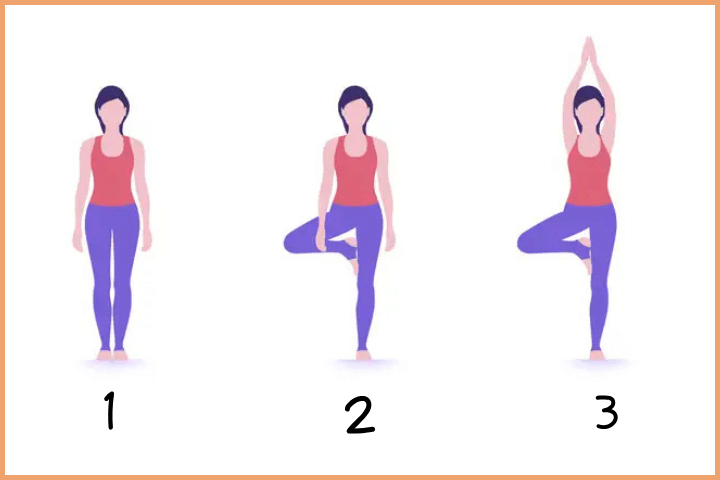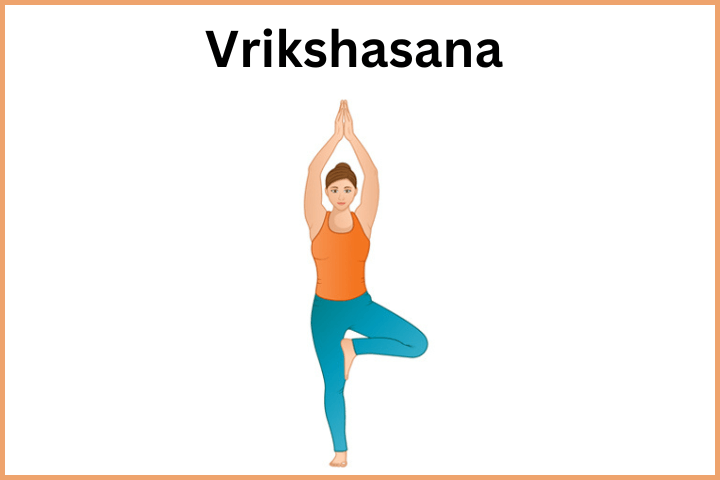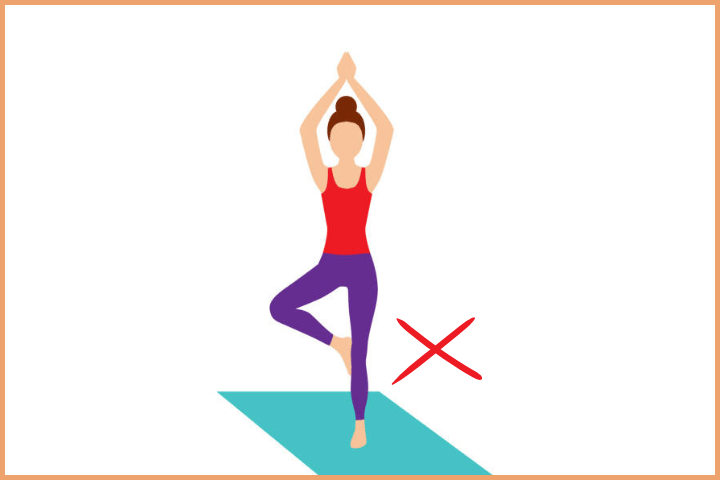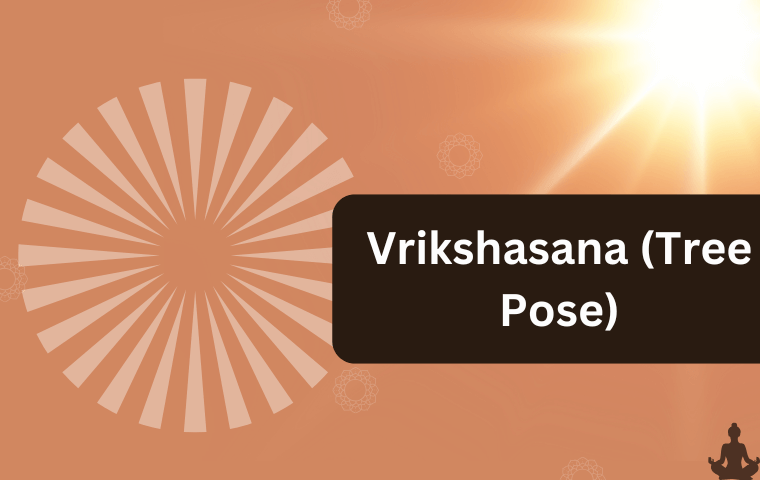Vrikshasana, also known as the Tree Pose, is a popular yoga asana that brings balance, strength, and calmness to both the body and mind. The name “Vriksha” means tree, and “Asana” means pose in Sanskrit. The pose is so named because, when performed correctly, the practitioner stands on one leg, resembling the sturdy posture of a tree.
How to Perform Vrikshasana (Tree Pose)

1. Start in Tadasana (Mountain Pose): Stand tall with your feet together and your arms by your sides. Take a slow breath and direct your focus forward.
2. Shift your weight to one leg: Stand on your left leg and gently raise your right leg. Bend your right knee and rest the sole of your right foot against the inner part of your left thigh. Ensure your right toe is face down.
3. Position your arms: After finding your balance, bring your palms together in a prayer position (Anjali Mudra) in front of your chest. Alternatively, extend your arms overhead with the palms facing each other.
4. Hold the pose: Keep your focus on a point in front of you to maintain balance. Breathe steadily through your nose and hold the position for 20-30 seconds.
5. Release the pose: Slowly lower your arms and right leg. Stand back in the starting position and repeat the pose on the opposite leg.
Types of Vrikshasana

- Classic Vrikshasana: The classic version of Tree Pose, where the foot is positioned on the inner thigh or calf of the standing leg.
- Modified Vrikshasana: Suitable for beginners, this variation involves placing the lifted foot on the ankle or shin, providing more stability.
- Vrikshasana with Wall Support: Beginners or those seeking extra support can practice near a wall to maintain balance.
Benefits of Vrikshasana
- Improves Balance and Stability: The Tree Pose helps enhance your physical and mental balance by requiring focus and concentration.
- Strengthens Leg Muscles: This pose engages the muscles of the standing leg, toning and strengthening the calves, thighs, and ankles.
- Enhances Flexibility: Regular practice of Vrikshasana can improve flexibility in the hips, groin, and inner thighs.
- Promotes Relaxation: The focus required to maintain the pose helps soothe the mind, alleviating stress and anxiety.
- Improves Posture: Vrikshasana encourages a straight spine, helping to improve overall posture and alignment.
- Boosts Mental Focus: The pose requires you to focus on a fixed point, improving mental clarity and concentration.
Tips for Practicing Vrikshasana
- Gaze Point: Focus your gaze on a fixed point in front of you to help maintain balance.
- Engage Your Core: Activate your core and raise your chest to stay balanced and stable.
- Avoid Knee Contact: Never place your lifted foot directly on your knee to avoid injury. Aim for the thigh or calf.

- Use a Wall for Support: If you find it difficult to balance, consider practicing near a wall for added support.
Precautions
- Avoid Placing Foot on Knee: Make sure the lifted foot is positioned on the inner thigh or calf of the standing leg, keeping it clear of the knee joint.
- Avoid Overstretching: If you feel discomfort in your legs, hips, or back, come out of the pose gently and rest.
- Not for Everyone: People with high blood pressure or knee injuries should avoid lifting their arms overhead during the pose. Individuals with balance issues can adjust the pose by leaning on a wall or chair for added stability.
Rooted in Balance
Vrikshasana (Tree Pose) is a simple yet powerful yoga pose that brings multiple benefits to your body and mind. By incorporating it into your yoga practice, you can improve your balance, strengthen your legs, and cultivate a sense of calm and focus. With regular practice, you can master this pose and enjoy its physical and mental advantages. Whether you are a beginner or an experienced practitioner, Vrikshasana is a great addition to any yoga routine.

